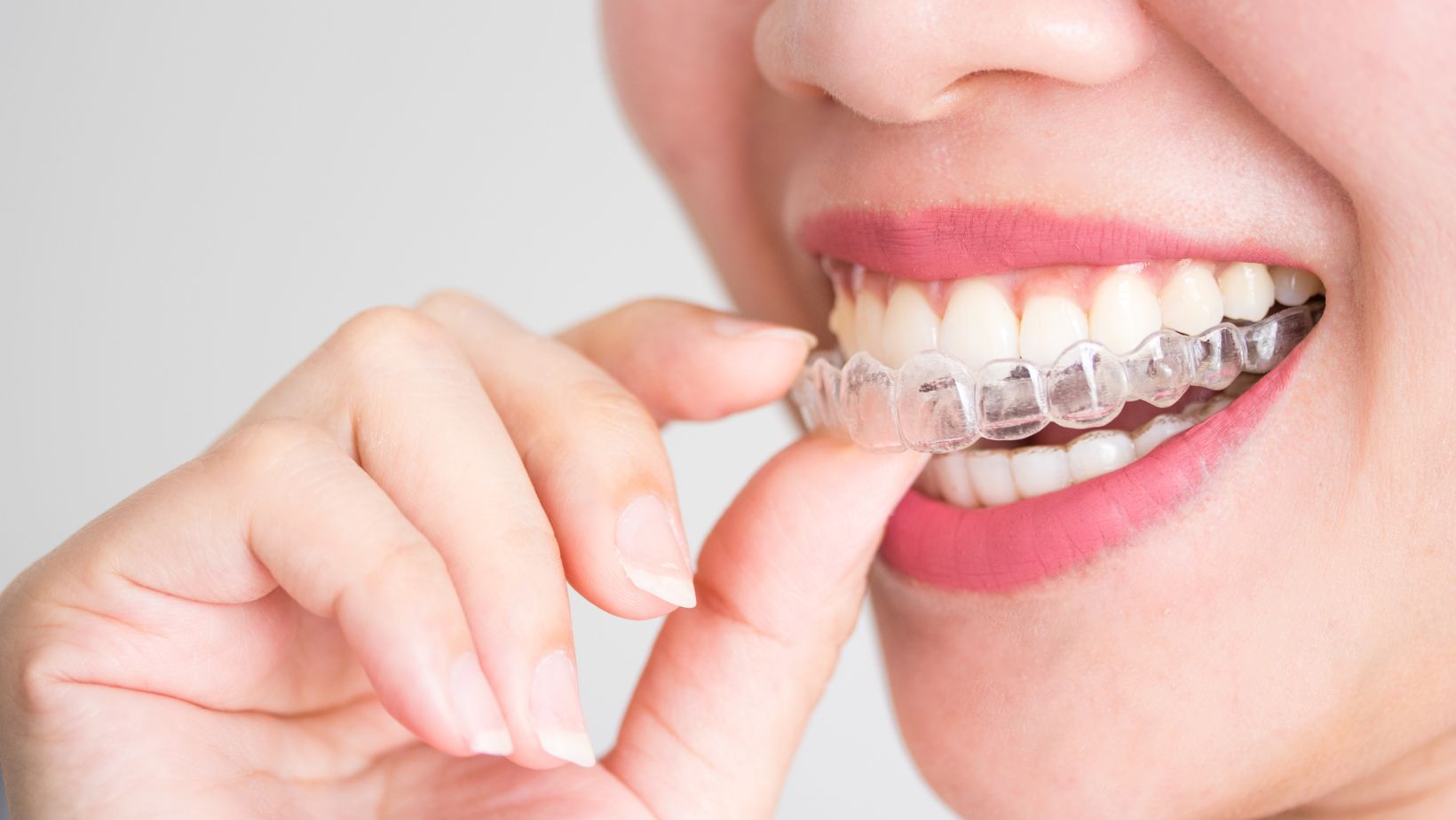If your teeth are crowded and you are looking into straightening them with clear aligners, your orthodontist may want to file or shave them first. Shaving teeth for Invisalign, also called enameloplasty, is a common procedure to narrow the teeth so aligners can work more effectively. It is generally safe when done by a professional, however, it’s a good idea to understand the pros and cons before agreeing to treatment.
How is Teeth Shaving Done?
After taking X-rays of your mouth, your orthodontist will be able to tell how much space there is to accommodate all of your teeth. Crowded teeth that are pushed together will not allow for the movement that takes place with Invisalign. The doctor will then decide which teeth should be narrowed to allow the teeth next to them to move into place.
Using specialized abrasive strips, your orthodontist will remove just a fraction of a millimeter from the vertical sides of your teeth. If any of your teeth are longer than the others, the dentist may file them horizontally as well. Since filing teeth for Invisalign actually removes the enamel from the surface, he or she has to be very careful not to shave so much off that nerves become exposed. .
Once the shape and size of each tooth is where it needs to be, the teeth will be polished so they are nice and smooth. The whole procedure takes about 30 minutes.
Is Shaving Teeth for Invisalign Safe?
Filing the teeth does not cause pain, so no general anesthesia is needed. This makes it a generally safe procedure. However, removing enamel from the teeth comes with risks to consider:
- Teeth can be more susceptible to cavities. If too much enamel is filed away, bacteria can settle in and lead to decay.
- Teeth may be more sensitive. The purpose of enamel is to guard the nerves and pulp. If enamel is left too thin, you will have sensitivity to hot and cold.
- Cracks and breaks are more likely in teeth that are already brittle. Patients whose teeth are badly worn are not candidates for shaving.
A good dentist will make sure to apply fluoride after he has shaved teeth for Invisalign, because it adds minerals that strengthen what is left of the enamel. Knowledgeable dentists will not suggest filing teeth for Invisalign if they find that the enamel is too thin.
The Benefits of Teeth Shaving
Because filing down crowded teeth makes more room for other teeth in the mouth, it offers multiple advantages for your dental health.
First, it makes cleaning between the teeth easier. Overcrowding allows food and plaque to settle into crevices that can’t easily be reached with floss or a toothbrush. Narrowing the teeth creates space for better hygiene.
Sanding teeth for Invisalign also eliminates the need to pull or “extract” teeth that are taking up too much space. Any tooth that is too large can just be shaved down to make room for the others.
And finally, shaving makes teeth more proportionate, allowing for a beautiful smile after Invisalign treatment is complete.

What Questions Should I Ask My Dentist or Orthodontist?
If your dental health provider has recommended shaving teeth as part of your Invisalign treatment, it’s important that you have a clear picture of what that entails. Be sure to clear up any confusion by asking:
Are there any alternatives to sanding my teeth for invisalign?
If you’re not comfortable with the filing/sanding process, your doctor should be able to ease your mind with more information or offer suggestions for alternative methods.
Will my dentist do anything to strengthen my remaining enamel?
Because shaving teeth strips away the enamel, many orthodontists will use a fluoride treatment to add minerals to the teeth. This can’t replace the enamel but will make the remaining enamel stronger.
Can I shave my own teeth?
This has been a terrible trend on social media, and your doctor will tell you why it’s such a bad idea. Dental professionals use precision tools to ensure they do not strip away too much enamel. Doing this on your own can expose nerves and lead to a lot of pain.
Will my insurance pay for teeth shaving?
Some insurance providers consider teeth shaving a cosmetic procedure and therefore do not cover the cost. Yours may pay for it if it is part of your orthodontic treatment.
Not Sure if Sanding Teeth for Invisalign is Right for You? Get a Second Opinion
Deciding to improve your smile with Invisalign is exciting. You should feel confident that your orthodontist is taking all the right steps to ensure you will be happy with the results. If you don’t feel comfortable having your teeth filed or you just want to get another professional opinion, we’d love to help you find another dentist.


